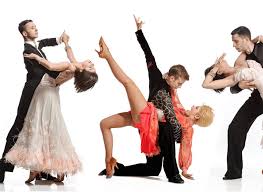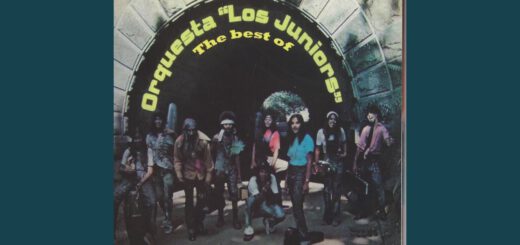What’s Authentic Bavarian and Austrian Alpine Folk Musik (Echte Alpenlaendische Volksmusik)?
When Americans think about German music, they associate it with the Polka-band sounds they hear at the various Oktoberfests held around the country. What most of them don’t know, however, is that the music I have just described is only one among the many kinds of German folk sounds. I don’t know if anyone ever tried to classify all of them, and I definitely won’t attempt it here. However, I want to introduce and explain one particular kind of Volksmusik, which I consider to be the most authentic in the regions between Bavaria, Austria and Northern Italy.
The main kinds of Volksmusik
In general terms, we could say that there are three main kinds of Volksmusik. From most to least commercial (and I use the word with no negative connotations whatsoever), these are:
1 – Volkstuemliche Musik. Volkstuemliche Musik is the most similar to what Americans are used to hear. Cheerful themes, cheerful rhythms (mostly Polkas), some modern instruments like drums, electric bass, electronic keyboards and a repertoire mainly detached from a historical tradition. At its highest level, volkstuemliche Musik brings huge crowds and the musicians are true local pop-stars.
2 – Oberkrainer Musik. Oberkrainer Musik stems originally from Slovenia. The typical ensemble has one or two accordions, a clarinet and trumpet playing in harmony, a bass and/or tuba (or other bass brass instrument) and a semi-acoustic guitar. Oberkrainer pieces are generally also cheerful and the themes are happy, although there is more variety in the dance-rhythms used. There is a heavy emphasis on instrumental virtuosity and, there is often copious borrowing of repertoire from echte Volksmusik.
3 – Authentic Alpine Volksmusik (echte Alpenlaendische Volksmusik). This music is played mostly in Bavaria, Austria and Sudtirol (Italy), and its roots extend back to the late 18th century. The greatest majority of the repertoire is also historical–mainly pieces that have been passed down unwritten through generations, and that are therefore subject to regional variations in both music and lyrics. Echte Volksmusik instruments include the steirische Harmonika (buttonbox accordion), the Zither, the Classical guitar, the harp, the double bass; plus clarinets, trumpets, violins and other, less-used instruments like the Ocarina, the Jew’s Harp and a sort of Mountain xylophone called Hoelzernes Glachter. Rhythms are varied, while themes range from the upbeat to the melancholic.
The anatomy of authentic Volksmusik
Authentic (echte) Volksmusik comes in many different guises, such as Stubenmusi (mountain lounge music), Saitenmusi (string-band music), duets, trios, quartets, etc. of different makeups ranging from the purely instrumental to the a cappella.
If I had to describe the typical Volksmusik piece, I would do so in the following manner, bearing in mind that this is a generalization and that there are many exceptions.
A large part of this music is based on dance-rhythms typical of the area. Although Americans usually associate German music with Polkas, perhaps the most prevalent dances in authentic Volksmusik are the Landler and the Boarischer. The Polka and the Walzer (waltz) have of course a place of honor, albeit more as « accent pieces » than as main fare.
Most phrases are eight or sixteen bars long, and the greatest majority of pieces can be danced to–with (generally) the exception of the Yodlers and some songs.
The Boarischer
The Boarischer is one of the bounciest dances in the Alpine tradition, and one of the absolute favorites among locals. With its name being dialect for Bayrischer (Bavarian), it is a leisurely, more hopping variation of the Polka, i.e. a dance in 2/4 time, not coincidentally also called Bayrisch Polka. In Austria it is also known as Bauernpolka, or Farmer’s Polka.
Dating from the mid-19th century, the Boarischer is danced in several ways, including the Offener Boarischer (open Boarischer) and the Figuren Boarischer (figure Boarischer).
The Landler
The Landler or Ländler is a 3/4 time dance originating in the final decades of the 18th century. It can be as quick as a Classical waltz or as slow as a sweet lullaby, which gives it incredible versatility. Together with the Boarischer, it is one of the most widespread dances for authentic Alpine music.
The Landler is also the type of dance often used by Schuhplattlers, who take advantage of its slightly slower tempo to showcase the intricacies of their arm- and footwork. Similarly, quicker Landlers are often used by musicians to showcase technical prowess, since they normally feature more note-intensive passages than their Classical cousin, the Waltz.
The Polka
The Polka became standardized in the first half of the 1800s–its name meaning « Polish » and originating, not coincidentally, in Eastern Europe. It is a quick dance in 2/4 time, and for many, it has become synonymous with German music–particularly Oktoberfest music.
In authentic Volksmusik, the Polka is heard less often than its other 2/4-time cousin, the Boarischer.
The Waltz
The Waltz is a dance in 3/4 time, originating from the Minuet and the Deutscher Tanz of the 18th century. It has a strong flowing swing that makes it a favorite among dancers, and it was of course the battle-horse of the great Viennese composer Johann Strauss.
With Alpine music, however, the Waltz often takes second place to the Landler, although the two can be danced similarly.
The Marsch
The Marsch (march) is recognizable by its military-like rhythm of 2/4 or 4/4. It is often used as the entry piece for dancers in traditional Alpine music, or even in Schuhplattling. Although they are dance-pieces, many marches also have lyrics in one or more of their sections–oftentimes some of the most joyful and anthem-like within the tradition.
Vocal music
Vocal music in this tradition is mainly divided between songs and Yodlers. The majority of the songs are accompanied by instruments, follow one of the dance-rhythms mentioned above, and may or may not contain a section sung yodel-style. Themes vary from the nostalgic to the downright bawdy, from the love or work-ethic to the « wink-wink » double meaning.
On the other hand, most Yodlers are slow, flowing wordless harmonies sung a cappella, and their sounds are reminiscent of pure Alpine echoes.
The Instruments of Traditional Alpine Volksmusik
Traditional Alpine Volksmusik uses a very well-defined set of instruments. The tradition is unique and dates back well over a hundred years, so the instruments associated with it are also quite distinctive and time-honored. The instruments most Volksmusik bands play are squarely in the Alpine tradition and are matched to make groups sound rich and complete.
Furthermore, the instruments are played following a clearly-established traditional technique, which even today is cultivated in music-schools and conservatories in the Alpine regions. In other words, what you play isn’t the only thing to matter: how you play it is just as important.
Here is a list of some of the most commonly heard Alpine Volksmusik instruments, along of a brief description of their characteristics.
Zither
The Zither is a table-top instrument belonging to the plucked-string family, and it achieved worldwide fame by the soundtrack of the movie The Third Man. It consists of a fretboard with five strings whose pitch is controlled by the left hand, plus a number of unfretted strings tuned in the circle of fifths. The right hand picks the fretboard strings with a thumb-ring while striking the bass and accompaniment with the ring, middle and index fingers.
The main difficulty in playing the Zither is coordination. The right thumb has to be completely independent from the other fingers to play the melody with feeling and expressiveness, while the other three fingers have to strike the rhythm in tempo and with a good bounce.
There are two main tunings for the Zither: the Bavarian and the Viennese.
Steirische Harmonika
A quintessential Alpine instrument, the Steirisches Accordion gets its name from Steiermark (Styria), a region of Austria that has produced countless excellent Volksmusikanten. It has three or more rows of buttons played by the right hand, each producing the notes of a key’s major triad upon pushing on the bellows and dominant seventh (plus a few other notes) upon pulling; and a corresponding number of basses played by the left hand.
The Steirische can only play in the keys corresponding to the rows of buttons it has. For instance, a Steirische that only has three rows (e.g. G, C, F), can only play in G, C and F. It has a distinctively brassy bass called Helikon, which is reminiscent of a tuba or Posaune, and that makes the Steirische’s sound unmistakable.
Classical Guitar
The Classical guitar is one of the main accompaniment instruments in authentic Alpine folk music. It is played mostly with the fingers of the right hand (without a pick), with the thumb playing bass notes and bass-runs, and the other fingers performing the chords.
Although physically similar to the Classical Spanish guitar known virtually everywhere, the Alpine Classical guitar calls for a special playing technique and a consummate feel for this type of music. A very characteristic accompaniment type is an « oom-pah » pattern in which the bass is kept very short by stopping it almost immediately with the palm or back of the thumb, while the chord is left ringing more freely. There are a number of interesting bass-runs that are characteristic of Alpine music, and that add bounce and zest to any piece.
The guitar is also used as a melody instrument, primarily with other guitars and/or harps, zithers and similar stringed instruments.
The Hackbrett
The Hackbrett is a sort of hammered dulcimer. Its use is either melodic-harmonic, i.e. playing along with other instruments in harmony; or rhythmic, i.e. playing eight-notes while the other instruments play longer values. It is very common in the Stubenmusi and Saitenmusi varieties of Alpine Volksmusik and it lends itself wonderfully for indoor, unmiked venues.
Schrammel Guitar
The Schrammel guitar consists of a regular Classical guitar with a second unfretted neck on which are stretched nine additional bass strings generally tuned chromatically from the Eb just below the guitar’s 6th string down to the G below–although alternative tunings are permitted.
This type of guitar was made popular in the turn of the last century by Viennese « Schrammelmusik » groups, where this guitar accompanied instruments like violins and clarinets. The thumb of the right hand plays the bass strings as well as the bass range of the guitar’s regular strings, while the other fingers play the higher notes fingered by the left hand on the guitar’s fretboard.
Naturally, the Schrammel guitar can also be played as a regular Classical guitar when called for.
The Harp, Double Bass and Other Instruments
Few know that the modern pedal harp owes at least some of its roots to Tyrol, the region of Austria bordering Italy. In Volksmusik, the harp is used in a very eclectic manner–either as a solo instrument or as accompaniment to other instruments.
The double bass is almost ubiquitous in larger groups, where its deep notes form the harmonic basis as well as the main rhythmic scansion. It can be played either plucked or with a bow, but either way, in dances it is played mostrly in short, staccato notes. It is the « oom » of the « oom-pah » rhythm, mostly playing alternating root and fifth of the chord currently being played by the other instruments. A common variation (or addition to) the double bass is a bass brass instrument like the tuba.
Other commonly-heard instruments include the clarinet, trumpet and the violin, while among the sounds occasionally heard are that of the Ocarina, the Jew’s Harp, the Mountain Xylophone (Hoelzernes Glachter) and the funny-named and funny-looking Teufelsgeige, or Devil’s fiddle, a rhythmic percussion instrument.
Alpine Volksmusik in the USA
Alpine Volksmusik is not easy to find in the USA–at least, as played by competent musicians knowledgeable of the tradition. There are a few individuals and/or groups scattered around the country, who will be delighted to share their passion for this wonderful music form with those interested. Players of this music, echte Volksmusikanten, approach their music and their instruments almost with Classical meticulosity, although at gig time you will see all the joie-de-vivre and the zest that is, itself, a great part of this tradition.
The best way to hear what authentic Volksmusik sounds like is to visit YouTube and to search for « echte Volksmusik » or for names like Franz Posch.
I hope that with this short article, you will be more inclined to get to know and appreciate the wonderful sounds of Alpine Volksmusik–which is a breath of fresh mountain air that will make everyone smile every time that it is played.
























